CCAT Observatory – Exploring the Universe from the Edge of the Sky
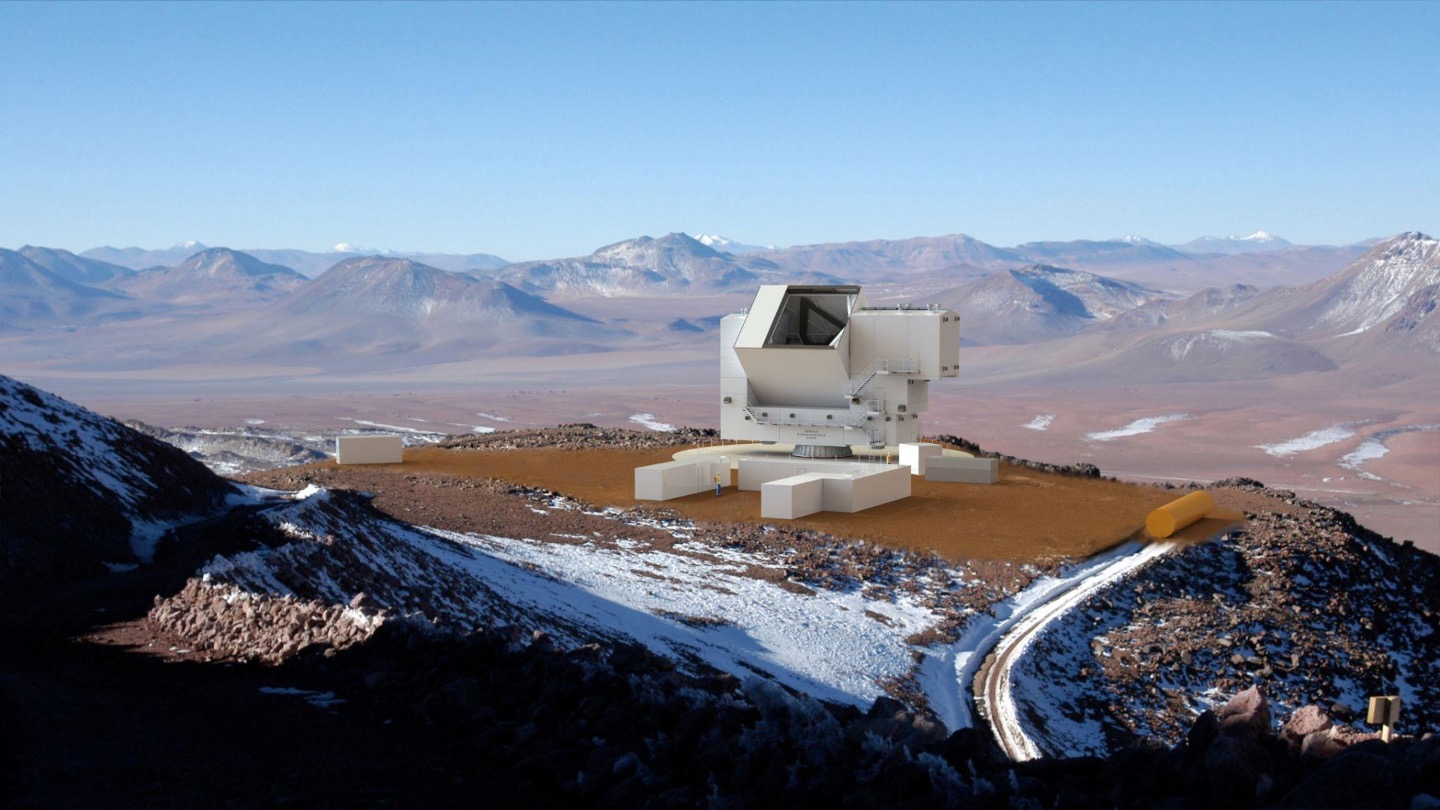
The CCAT Observatory is a next-generation facility designed to explore the universe in submillimeter wavelengths. The observatory will investigate a wide range of cosmic phenomena, using advanced superconducting detectors and state-of-the-art cryogenic systems. Inside CCAT’s telescope, two major instruments—Prime-Cam and CHAI—will drive the science. In this article, we’ll focus on Prime-Cam. Deployment of the telescope is now underway, with first observations expected in 2026.
Introducing the CCAT observatory
The CCAT Collaboration brings together scientists, engineers, and institutions from around the world – including the United States, Canada, Germany, and Chile. Together, they pursue ambitious shared scientific goals: investigating galaxy formation, probing the structure of the early universe, and uncovering the cosmic processes that shaped the universe we observe today.
At the heart of the collaboration is the CCAT Observatory, home to the 6-meter diameter Fred Young Submillimeter Telescope (FYST). This powerful telescope is currently being assembled atop Cerro Chajnantor, at an elevation 5 600 meters (18,400 ft) above sea level. This site was chosen for its exceptionally dry atmosphere and outstanding observational conditions ideal for submillimeter astronomy – studying the universe by observing light at wavelengths shorter than a millimeter.
This region of northern Chile has already proven its value to astronomers, with several major observatories located nearby—such as ACT, ALMA, and, most recently, the Simons Observatory.
Compared to the Simons Observatory, the CCAT’s site sits about 400 meters higher in elevation. While the difference may seem small, the reduction in water vapor at the higher elevation makes a critical difference for detecting the submillimeter signals that CCAT is designed to measure.
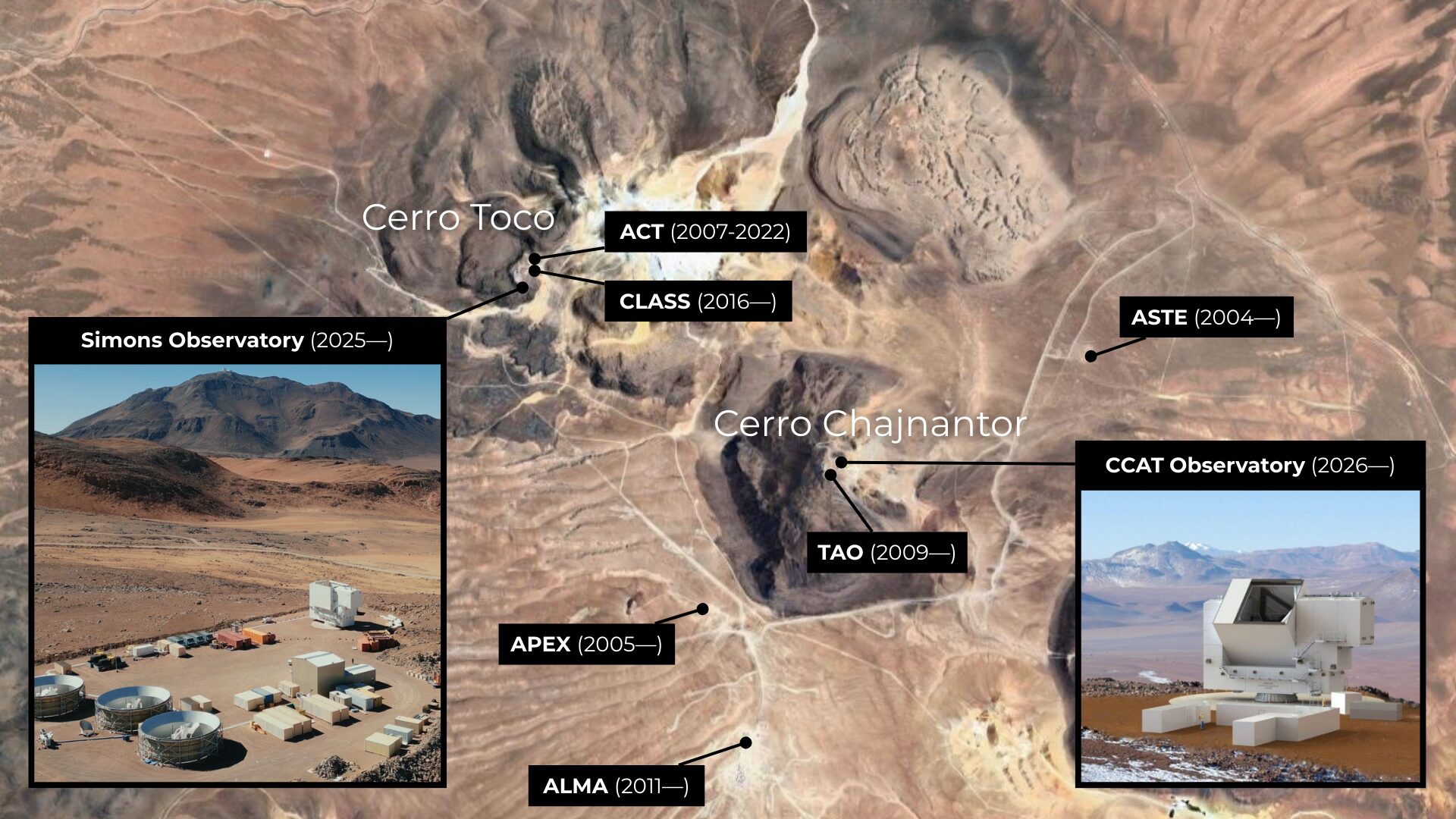
The CCAT Observatory and Simons Observatory have been designed and developed in collaboration, with teams sharing technological advances and pushing each other toward new frontiers. Now, with Simons Observatory up and observing, and the construction of CCAT underway, the excitement is mounting. If all goes as planned, FYST will begin its first observations early next year.
We interviewed two researchers who have been a part of bringing CCAT Observatory to life: Dr. Michael D. Niemack and Dr. Eve Vavagiakis. “One of things that most excites me about the CCAT Observatory project is how multifaceted the science is,” Eve shares. “We get to work with cryogenics, we do mechanical engineering, and we develop novel detectors—thinking about superconducting materials and the various properties of those materials. And then we zoom out and think about space and the universe as a single system.”
She continues, “I always call it being intellectually greedy—I feel like I’ve had the chance to think deeply about so many different academic topics that someone could easily spend their entire career on. And in developing these cameras, I get to sample all of them, which I find really exciting.”
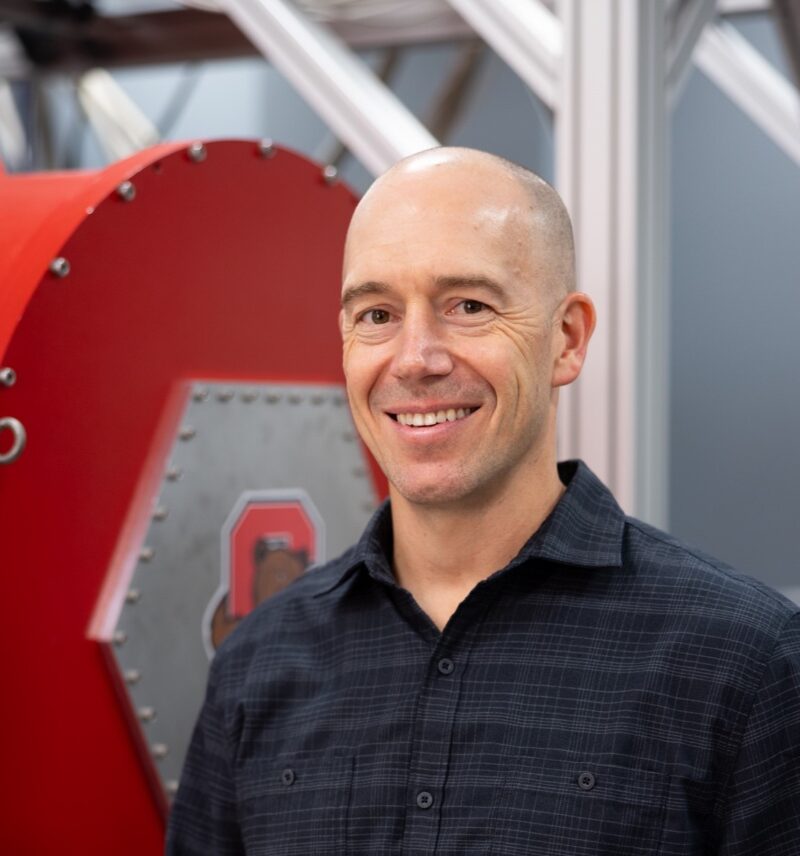
Michael D. Niemack
Dr. Michael D. Niemack is a Professor of Physics and Astronomy at Cornell University, where he leads research at the intersection of cosmology, instrumentation, and superconducting technology. His work focuses on developing state-of-the-art instruments—like superconducting detector arrays and cryogenic optics—to study the early universe through ultra-sensitive measurements of microwave and submillimeter radiation. Mike has led the development of Prime-Cam.

Eve Vavagiakis
Dr. Eve Vavagiakis is an Assistant Professor of Physics at Duke University, where she is establishing her own lab. Previously she worked as an NSF Astronomy and Astrophysics Postdoctoral Fellow at Cornell, in Michael’s research group. Her research interests span cryogenic instrumentation, superconducting detectors, and cross-correlation analyses with optical surveys to learn about the properties of galaxy clusters and the fundamental physics of our universe.
Science in the Submillimeter
As its name suggests, the Fred Young Submillimeter Telescope (FYST) is designed to observe the universe at submillimeter wavelengths—frequencies of light with wavelengths shorter than a millimeter. These wavelengths are especially useful for seeing through cosmic dust, revealing hidden regions around forming stars and supermassive black holes.
One of FYST’s main science goals is to study the Sunyaev-Zel’dovich (SZ ) effect in galaxy clusters. They are the largest structures held together by gravity in the universe, making them key to understanding how cosmic structure evolved. Eve explains: “Galaxy clusters are the largest gravitationally bound structures in the universe, providing valuable insights into the universe’s large-scale structure. By studying the cosmic microwave background that creates the SZ effect in clusters , we are able to probe multiple eras, from the Big Bang to the Epoch of Reionization, to our own Milky Way’s formation.
“This research can also help us understand fundamental physics, including general relativity and neutrino masses – using the universe as a lab to better understand what our universe is made of and how it’s developing,” Eve continues.
Another major focus is on mapping the first generation of star-forming galaxies, using the faint glow of singly ionized carbon (C II emission) from the Epoch of Reionization—the period when the first stars and galaxies formed. To study it, FYST uses a technique called intensity mapping, capturing a wide range of wavelengths at once to trace how carbon emissions change over time and across space.
“There is still much we don’t understand about the Epoch of Reionization. Measuring the integrated signal from these first stars and galaxies becomes possible with fine spectral resolution—collecting data across about 100 closely spaced wavelengths,” Mike says.
While the James Webb Space Telescope has been providing fascinating new insights by observing individual galaxies from this era, FYST takes a broader approach. “We will approach this epoch differently by mapping out the changes over time and across larger spatial scales,” Mike explains. “We will particularly focus on the emission from carbon atoms formed in the first stars and galaxies,” Mike explains.
FYST will also study our ‘local’ universe, targeting multiple spectral lines from the interstellar medium (ISM) in the Milky Way, the Magellanic Clouds, and nearby galaxies.
And that’s just part of the picture—CCAT hosts eight science projects in total, spanning everything from cosmology to astrophysics. FYST also has the potential to serve as a next-generation Cosmic Microwave Background (CMB) observatory, continuing the quest to understand the earliest moments of the universe.
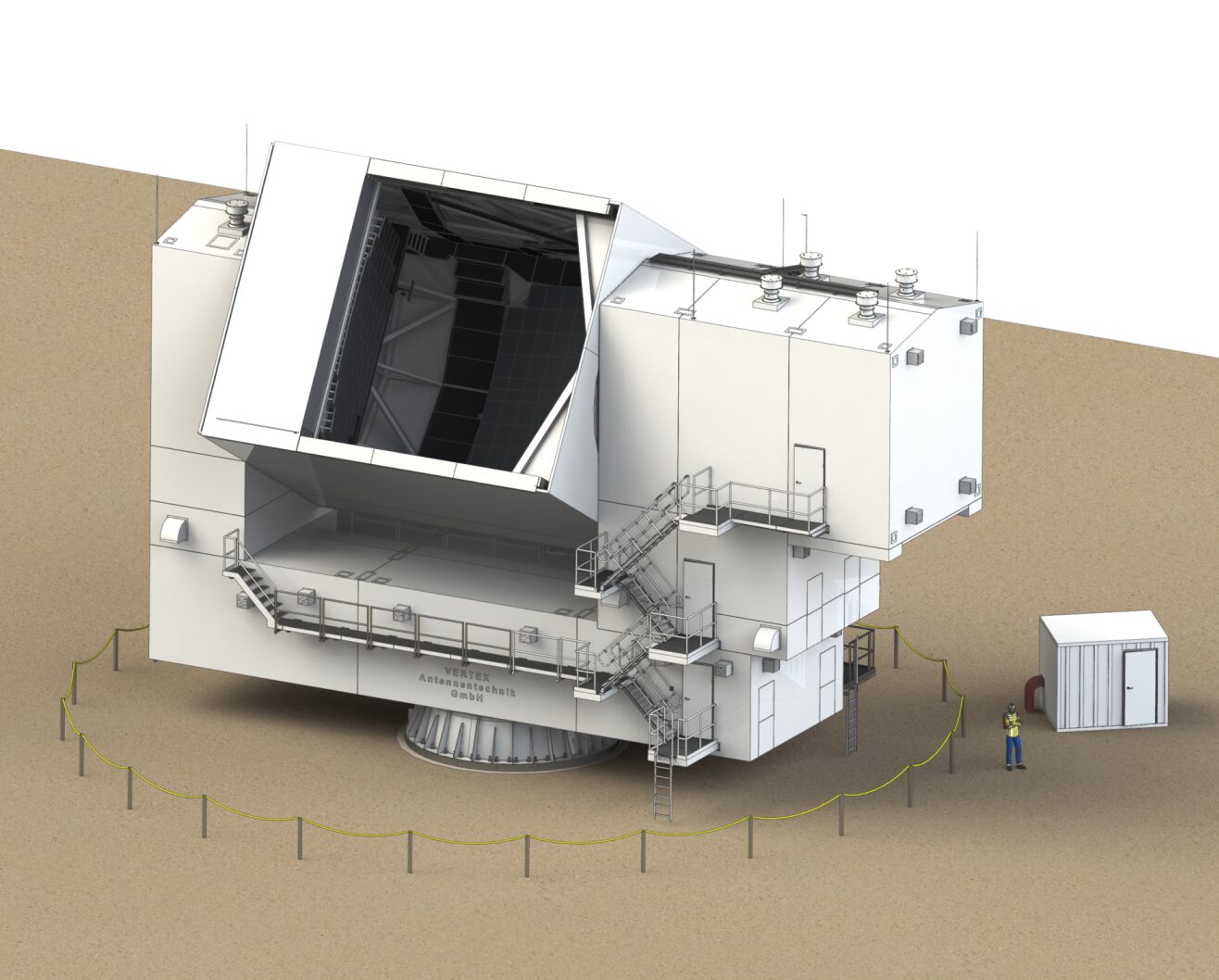
Collaborating for a Clearer View
The CMB is the oldest measurable light in the universe; radiation left over from the Big Bang. It’s a cosmic relic packed with information about the early universe, and mapping it in greater detail is an important goal for modern cosmology.
Several major projects, including the Simons Observatory, are dedicated to observing the CMB. These experiments typically focus on millimeter wavelengths; the Simons Observatory operates within a frequency range of 30 to 300 GHz. FYST’s ability to observe submillimeter wavelengths provides a valuable complement to those efforts.
One of the key challenges in CMB research is separating the faint CMB signal from foreground emissions, such as thermal radiation from dust in our own galaxy. This is where CCAT’s strength lies. “The CCAT Observatory is particularly well-suited for helping disentangle the foreground signals from these very early universe signals,” Mike says.
“The different profiles and intensities of light in these foregrounds and the CMB vary by wavelength. As we measure with the Fred Young Submillimeter Telescope at shorter wavelengths, the foreground signals from our galaxy become brighter while the CMB signals become dimmer. This contrast allows us to observe both the CMB and the foregrounds, and to provide new information on how to separate the two.”
By combining observations from both CCAT and the Simons Observatory, scientists can more effectively disentangle the true CMB signal from the cosmic foreground “noise”, helping unlock even more precise data about the early universe.
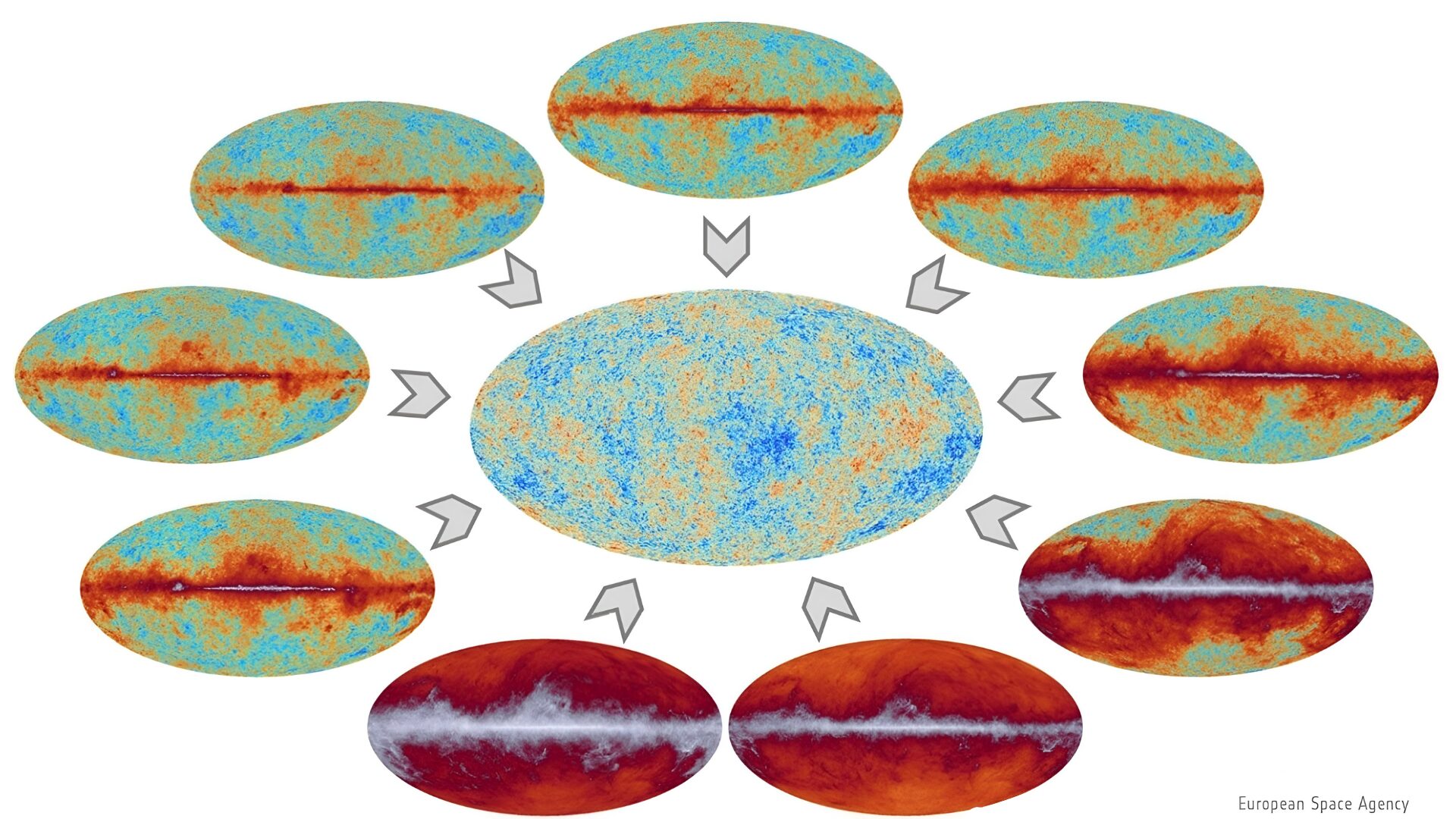
Discovering Astronomical Transients
The cooperation between the two observatories, CCAT Observatory and Simons Observatory, is key to enabling their ambitious science goals. Their complementary wavelength coverage pushes the boundaries of what we can learn about the universe. While studying the Cosmic Microwave Background with greater precision is a major focus, the observatories also opens up exciting opportunities to study astronomical transients—cosmic events that happen on human timescales.
Mike explains: “Our team at Cornell has played a significant role in using the Atacama Cosmology Telescope (ACT) to search for time-varying signals in the millimeter wavelength sky. This work has led to the discovery of flaring stars and novas, which we measured in unprecedented ways. Now, with both CCAT and Simons operating simultaneously, we gain much greater sensitivity, allowing us to extract more detailed information about these transient objects.
“This will enable us to continue measuring stars and novas within the Milky Way galaxy, and to extend our searches to nearby galaxies and more distant extragalactic sources. The complementary wavelengths of the two projects will provide a wealth of information that would not be possible with a single observatory,” Mike continues.
The Technology Behind the Telescope
CCAT Observatory’s Fred Young Submillimeter Telescope and Simons Observatory’s Large Aperture Telescope appear similar from the outside, and those similarities are no coincidence. “Eve and I both worked on these projects,” Mike explains. “We’ve shared technical knowledge right from the beginning. The experiments are highly complementary, and there’s no reason to reinvent the wheel—we learn from each other instead.”
Much of the telescope design originated with CCAT and flowed into the Simons Observatory’s development. Conversely, many components of the receiver system were initially created for Simons and then adapted for CCAT. By sharing resources, the teams can further push the limits.

For the measurements, CCAT observatory relies on Prime-Cam. “Prime-Cam is essentially our first-generation science instrument, and it will eventually deploy seven instrument modules, covering frequencies from 220 to 850 Ghz. Two modules will have spectroscopic capability—one using a Fabry-Perot interferometer and the other using a spectrometer-on-a-chip. These are cutting-edge technologies for submillimeter astronomy,” Eve explains.
“Each module is independently designed, built, and operated by different teams in several universities, and tailored for specific wavelengths and science objectives. But they all go into Prime-Cam ultimately ,” Eve continues.
Prime-Cam’s seven 40 cm diameter modules are housed inside a 1.8 meter cryostat. But why are cryogenics needed? Mike breaks it down: “When we observe light from the sky, we’re really measuring temperature variations—tiny ones. In cosmic microwave background (CMB) studies, we’re talking about fluctuations at the microkelvin level, even pushing toward nanokelvin. Any thermal noise could overwhelm these faint signals. That’s why Prime-Cam, and especially its detectors, need to be cooled to extremely low temperatures.”
The cryostat has several layers of cold, with each being cooler than the next. Eve explains, “The system is cooled by a Bluefors LD400 dilution refrigerator and several Cryomech pulse tube cryocoolers – two PT420s and one PT90 – with temperature stages at 300 K, 80 K, 40 K, and 4 K. The modules themselves are mounted on the 4 K stage and include sub-stages down to 100 millikelvin.”
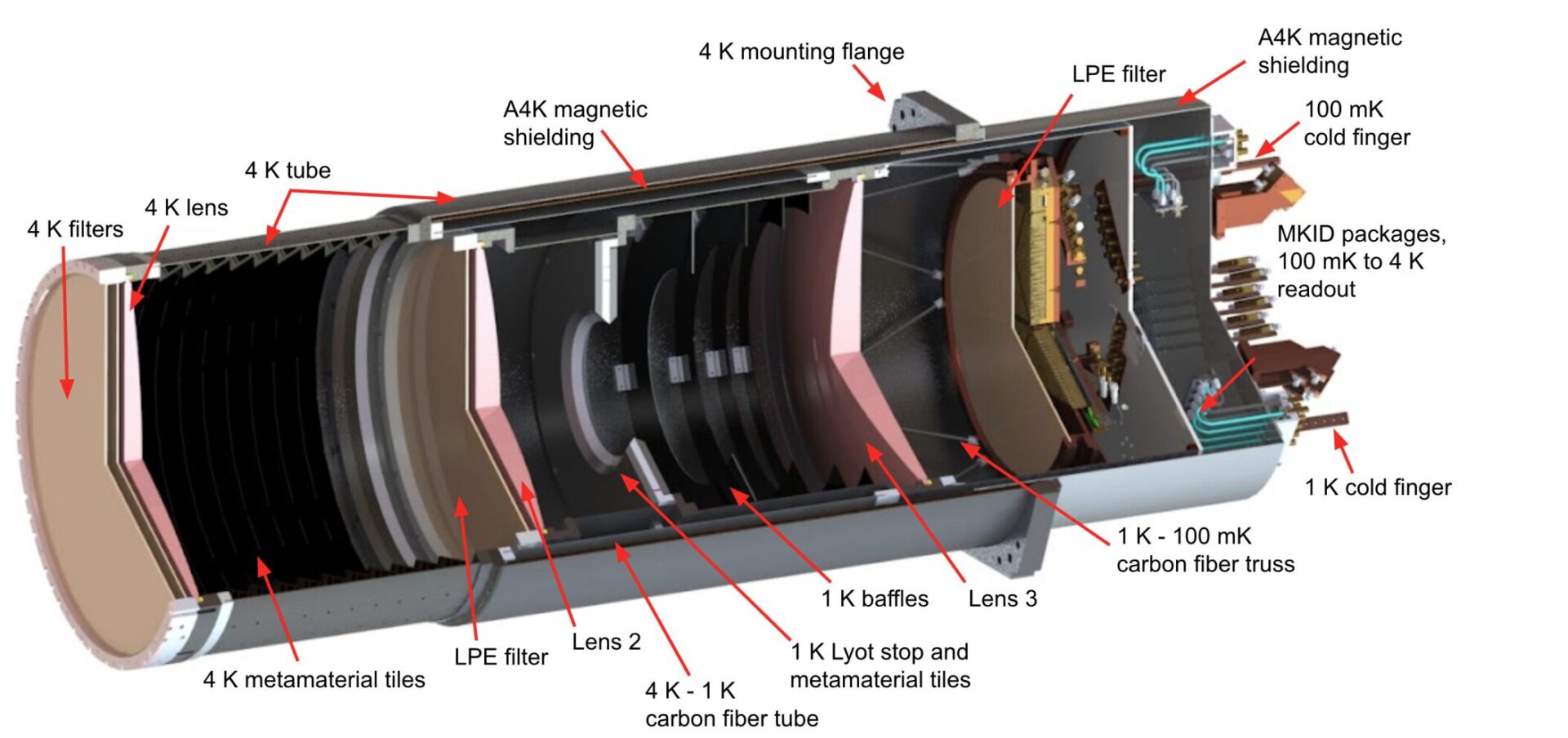
Prime-Cam’s modules are tested with Mod-Cam, a smaller, simplified version of Prime-Cam. “It’s a one-module version of Prime-Cam, with the dilution refrigerator offset to one side. That makes it easier to swap modules quickly and allows for shorter cooldown times,” Eve explains.
Mod-Cam will also be the first light instrument for CCAT as it is almost ready, while Prime-Cam is still in development. It will be used to deploy CCAT’s first instrument module, the 280 GHz module, which is currently undergoing testing and validation in the lab. Mod-Cam will begin CCAT Observatory’s early science observations in 2026. “Mod-Cam is almost ready for deployment at Cornell, which is fantastic,” Eve shares.
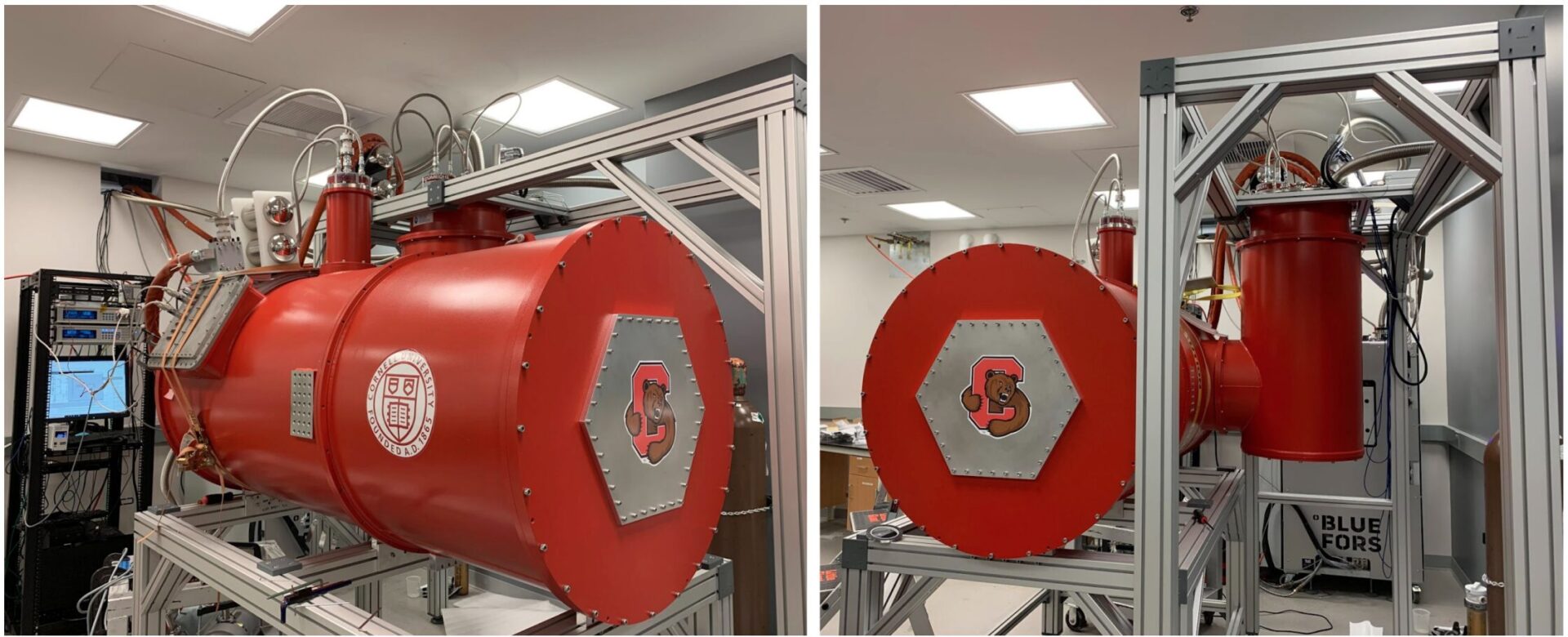
Detector Breakthroughs
The real power of these instruments lies in their detectors—the heart of the telescope’s ability to capture faint signals from the cosmos. “If we do everything right, our main limitation is noise from our atmosphere. And once you’re limited by atmospheric noise, the best thing we can do is put more and more detectors on the sky—so we can integrate down that noise faster than we otherwise could”, Mike explains.
This focus on increasing detector count is where much of the innovation lies. “What’s most novel about these telescopes,” Mike says, “is that we can put ten times more detectors on them than anyone has in the past. That’s why we’re pushing so hard on this technology and why we’re building these multi-module instruments.”
At Simons, several modules observe the same wavelength to boost detector count and increase mapping speed. At CCAT, the approach is a bit different: each Prime-Cam module targets a different frequency band to broaden scientific coverage. “Eventually, we might double up at certain frequencies,” Mike says, “but right now we’re focused on pushing the limits across as many wavelengths as possible.”
To push the instruments’ detecting capabilities even further, the CCAT team has adopted new state-of-the-art detectors. Both Mod-Cam and Prime-Cam are built around kinetic inductance detectors (KIDs)—a powerful superconducting detector technology ideal for large-format arrays. KIDs work by detecting changes in resonant frequency caused by incoming photons. Since each detector is fabricated with a unique resonant frequency, thousands can be read out on a single microwave feedline using frequency-division multiplexing.
“Mod-Cam, even with just its first module, will have over 10,000 of these detectors,” Mike says. “That’s the largest number of kinetic inductance detectors ever deployed in the millimeter and submillimeter wavelength range for an astronomical instrument.” “This means Mod-Cam will be the fastest mapping instrument at 280 GHz (or 1.1 millimeters) ever built,” Mike adds. “And Prime-Cam, once completed, will have seven times that number, resulting in an almost tenfold increase in the number of detectors, covering multiple wavelengths and providing even faster mapping capabilities. This advancement is crucial for driving the field forward in these types of measurements.”
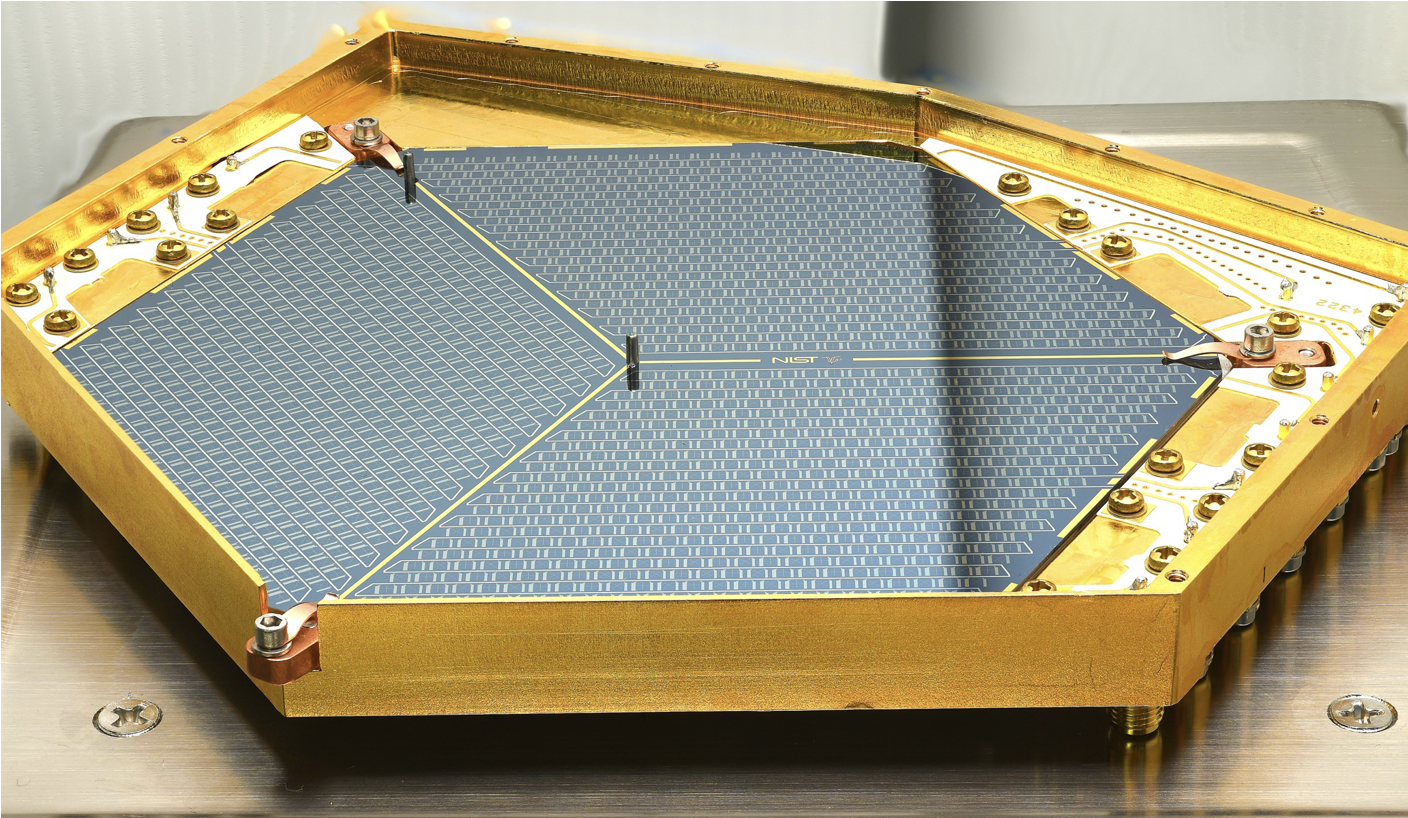
Cool for Progress
Bluefors dilution refrigerators and Cryomech cryocoolers play a central role in both Prime-Cam and Mod-Cam, providing the cooling needed for cutting-edge detector technologies. Eve highlights how critical that performance has been: “The cooling power of the Bluefors systems is really what enables us to push the boundaries of our technology.”
“Thanks to that cryogenic performance, we’ve been able to rethink and evolve the entire readout architecture for Prime-Cam. We’re developing a whole new suite of readout systems and software to support our kinetic inductance detectors—all of that work is made possible by the foundation that these cryogenic systems provide,” Eve continues.
Mike, who has worked with Bluefors systems for many years, reflects on his experience: “My experience with Bluefors has been great. I’ve been at Cornell since 2013, and I think I bought the first Bluefors system for a lab at Cornell. Now, for this project, we’re using five Bluefors systems, one of which we primarily use for the Simons Observatory.”
“That original system from 2013 is still in regular use, and it’s proven to be robust and reliable. When we’ve run into problems, Bluefors support has always been excellent,” Mike says. “We really appreciate the capabilities and flexibility of these systems, which are totally key for enabling the science we’re pursuing.”
Beyond their performance in the lab, these cryogenic systems also streamline field operations. Eve says, “One of the exciting aspects is that we can work with these systems both in the lab—advancing our technologies and designs at individual institutions—and also deploy the exact same models of refrigerators in our instruments themselves, inside our cameras. That gives us the ability to standardize different mounting structures, cooldown procedures and gain knowledge about how these refrigerators work.”
“Overall, having Bluefors and Cryomech systems at labs across the world enables us to share information, share knowledge, and develop shared hardware – making our operations easier in the field,” Eve continues.

Deployment: Bringing It All to Life
With first light on the horizon, the CCAT collaboration is entering one of the most exciting phases of the project. “All of the major structural parts of the telescope are now in Chile and currently being reassembled—everything except the mirrors,” says Mike. “They are still being finished in Germany and will be the final components to be installed. The full telescope should be assembled before the end of the year. After that, we’ll begin telescope commissioning and mirror alignment, preparing for the arrival of the Mod-Cam instrument in 2026.”
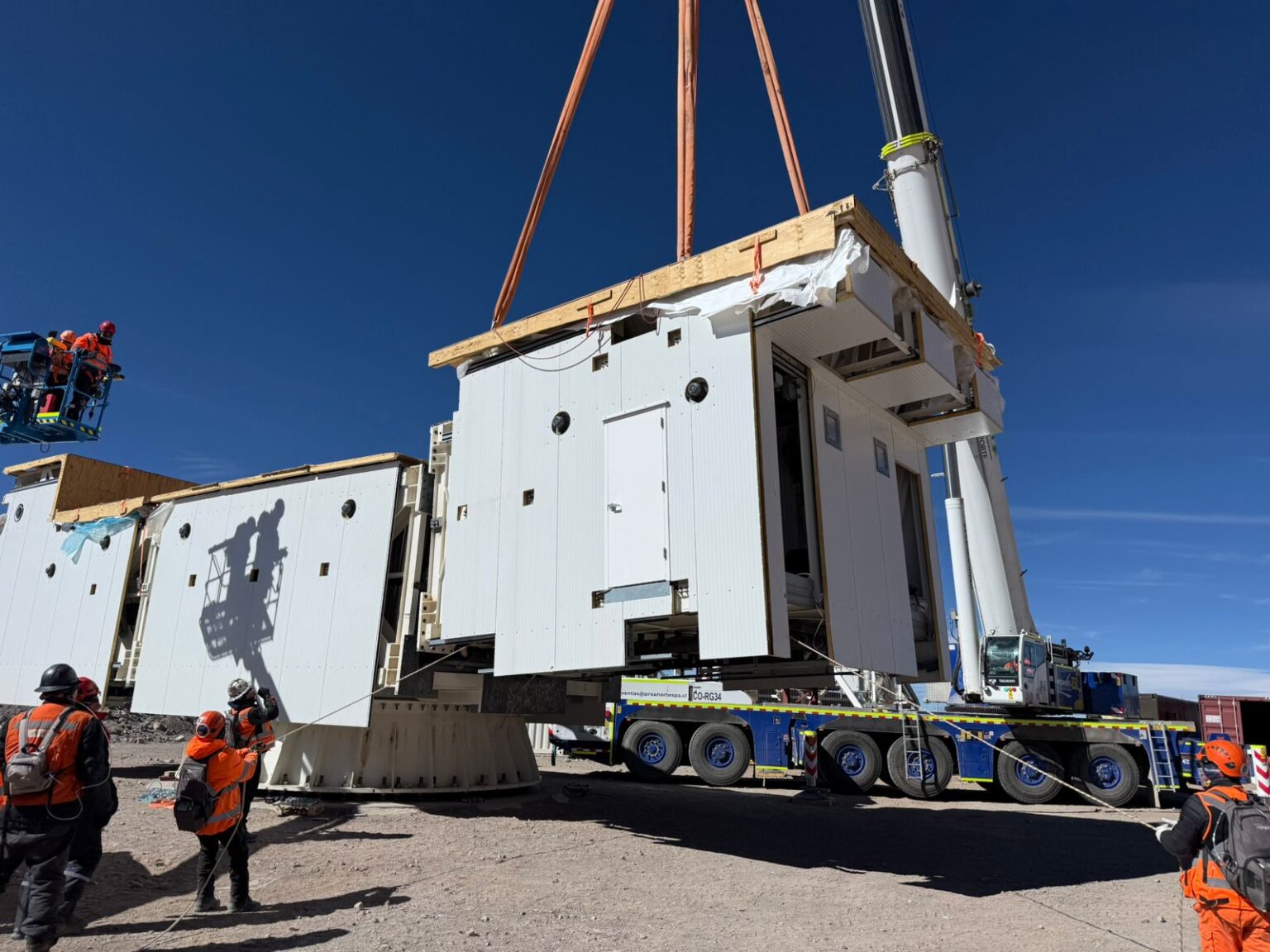
Both Eve and Mike are looking ahead to the deployment phase with eager anticipation. Mike explains, “We spend years developing these instruments in the lab—getting everything to work just right—and then we take them to these extreme high-elevation sites with unique telescopes and try to get them working there. We’re out in the high desert, with nothing else to focus on except getting the instrument running. That moment—where all the teamwork and years of effort come together—is one of the most fun, challenging, and exciting parts of the research for me.”
Eve shares that sense of anticipation and respect for the process. “Even though we benefit from a strong legacy of instrument design, we’re also doing something completely new. Models and simulations can only take you so far—real-world performance always brings surprises. That’s why extensive lab testing is critical, and even then, there’s still a second phase of problem-solving once we’re on site.”
“That’s where the exciting challenges pop up—when things start working a little differently than expected, and you have to think on your feet and adapt to make it work,” she continues.
Working at high altitude in the Atacama Desert also brings a unique sense of perspective. “Since we’re not launching these instruments into space, we operate in a kind of in-between role—almost like ground-based astronauts,” Eve says. “Being among ancient stratovolcanoes at one of the most unique sites on the planet, deploying instruments we’ve spent years developing, is both thrilling and deeply challenging, physically and technologically. I’m so excited to bring these instruments up there and to return to those mountains. Honestly, it’s one of the best parts of the job.”